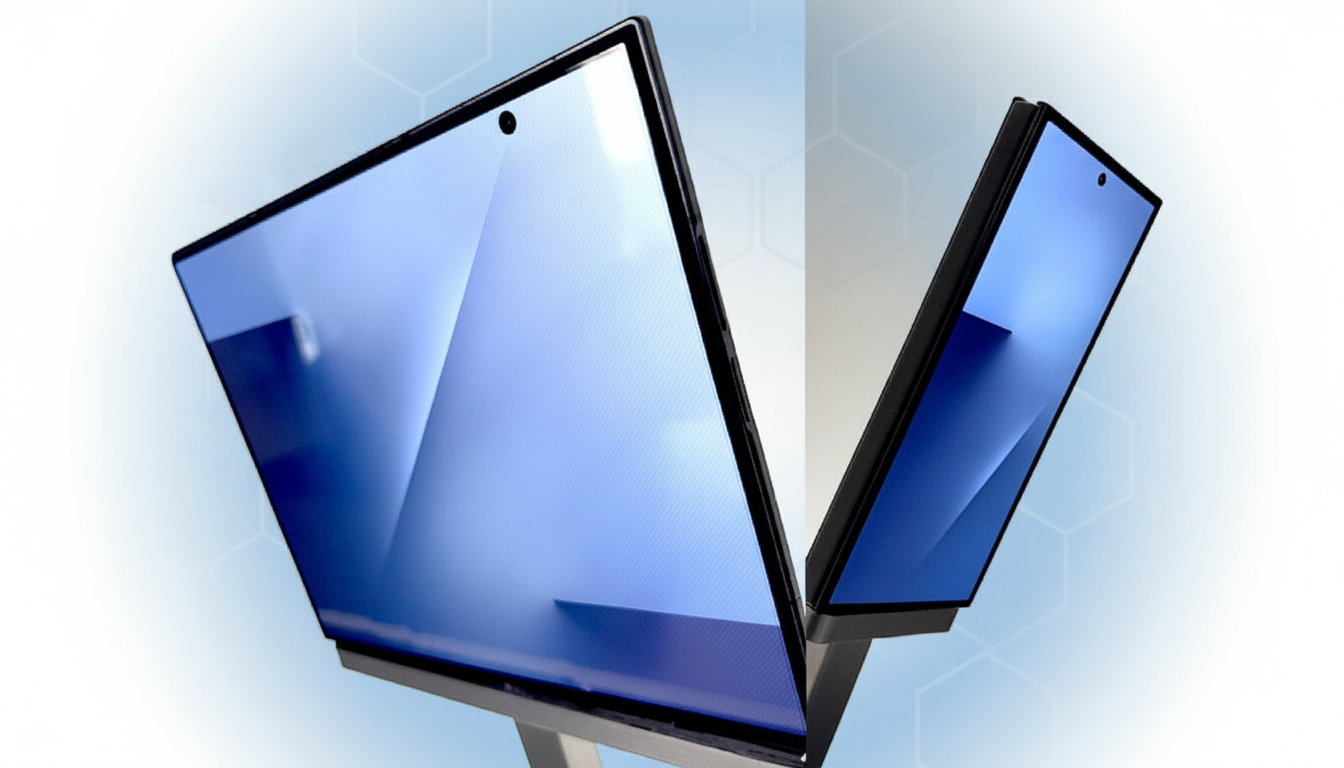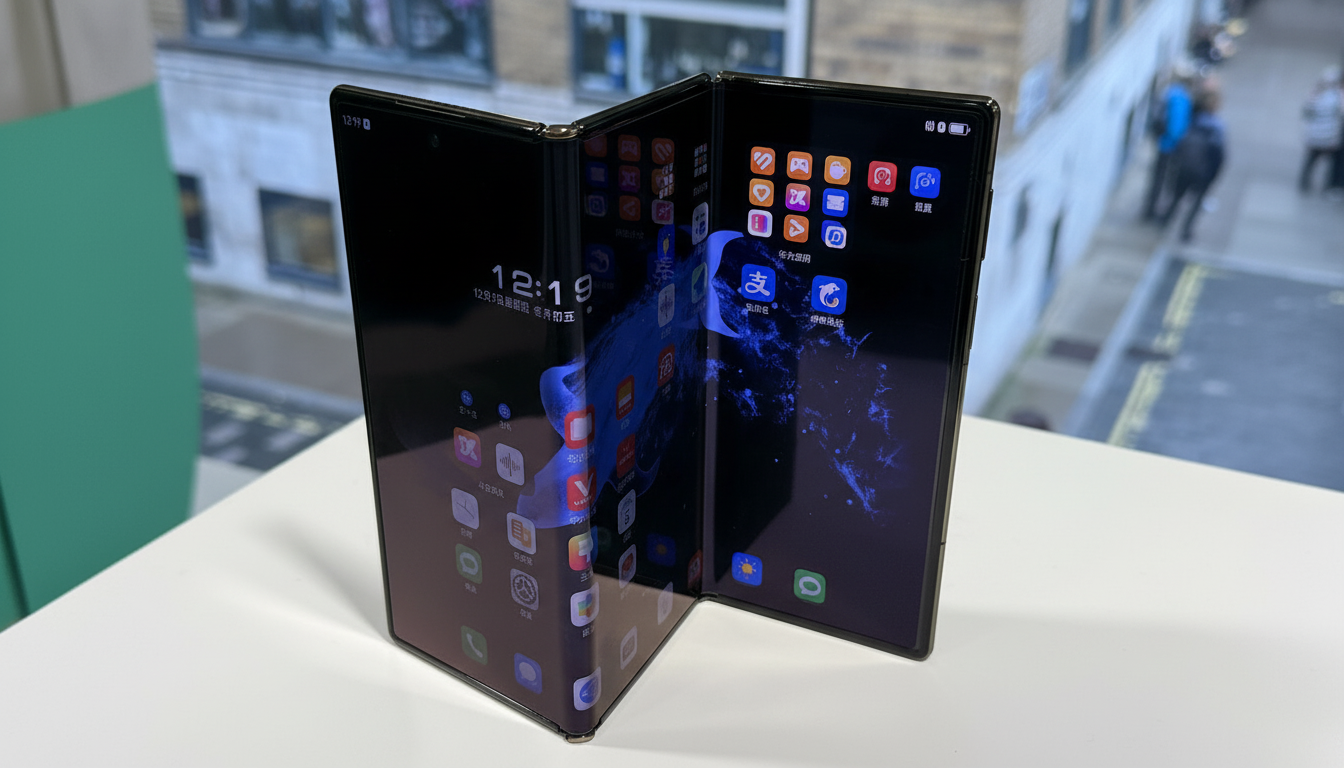Samsung’s long-rumored trifold phone just popped up in a place that doesn’t often fib about what’s coming next: buried strings within the Google app.
Name-drops of a “2025 Samsung Trifold” in an internal device roster hint that the company’s most ambitious foldable might be getting closer to reality.

Clue Found in Google App Code Suggests Trifold Timing
Code sleuths combing version 16.43.60 of the Google app found strings in the arm64 build that indicated how registrations should be tracked and validated for devices eligible to receive free Gemini promotions, with this string listing “Samsung Trifold” amongst other Samsung models that have yet to be announced, according to XDA. The label “2025” appears over and over, suggesting a time frame for such an effort rather than something abstract. And the string interestingly sticks with “Trifold” as the identifier, rather than Samsung’s Galaxy Z branding, which it uses for its latest foldables—so that may be placeholder text or a hint that Samsung wants to keep a separate identity for this form factor.
There’s no official word on any of this, as with all app teardowns. Internal lists get edited, and marketing names may swap late in development. But Google’s promo device rosters have historically been an accurate early indicator of a season’s devices, and often dovetail well with launch plans for partner flagships.
What a Tri-Fold Would Mean for Samsung’s Lineup
By contrast, a tri-fold, despite the apparently misleading name, usually refers to a mechanism that folds in two places to encompass three panels. Samsung Display has demonstrated a few concepts in recent years, most notably “Flex S” and “Flex G” concepts, as well as a design it calls “Flex In & Out,” which folds both inward and outward. The appeal is obvious: a slab the size of a phone that can unfurl into something akin to tabletzilla, without weighing you down with another device.
The engineering problem is just as clear. Two hinges, and all the complexity, thickness, and weight they bring. Samsung’s most recent foldables are designed to last around 200,000 folds, so durability would also need to be met for the addition of perhaps even more moving parts. Crease control down the middle and uniform brightness across three display segments are additional challenges that will push materials and manufacturing.
Market Context and Competitive Pressure in Foldables
Foldables remain a high-growth niche. Counterpoint Research estimates global foldable shipments hit about 16 million in 2023, up about 33% versus the previous year, with momentum forecast to propel the number past 20 million in 2024. IDC too has been observing consistent double-digit growth as prices stabilize and new vendors join the category.
Rivals have been circling the tri-fold concept. TCL has shown tri-fold demos, panel makers like BOE have shown multi-fold sample displays. Retail devices haven’t landed yet, but multi-hinge phones have been patented by the likes of Huawei and other Chinese brands. A commercial tri-fold from Samsung — the closest thing to an entrenched foldable maker there is, some might say — could reset the conversation and force others to speed up their double-pane strategies.

AI Packages Signal a Services Play for Trifold
The Google app reference is important for reasons that go beyond the hardware.
The fact it’s in Gemini’s promo list indicates Samsung could be packaging a trial of Gemini Advanced via Google’s AI subscription—a tactic the latest Samsung flagships have used to entice early adopters. On a tri-fold device, generative AI and on-device assistants could be central to the user experience for managing multi-window layouts, live notes on a large canvas, and smooth handoff between folded and unfolded states.
There will be a lot of tight coordination between Samsung’s One UI features—an experience that includes DeX, multi-active windows, and continued improvement in the continuance of tasks—and Google’s system-level foldable APIs when the phones arrive.
The bigger story is not only a new shape but also: Does the software feel native to that shape on day one?
Release Timing and Branding Questions for 2025
The frequent appearance of the “2025” tag in Google’s internal list points to a near-term launch. Samsung tends to cut the big launches in half, with an early-year Galaxy S event and a midyear foldables showcase. One possibility is that a tri-fold could show up beside — or as a corona above — the follow-ups to Z Fold and Z Flip, or appear in its own star-studded headline so it doesn’t hog all of the attention.
Branding remains an open question. This would let Samsung continue to use the “Galaxy Z” branding or relegate the tri-fold to a new sub-family. There’s also no clear regional strategy once the device is finalized, either; regulatory hassles and supply priorities may lead to a narrow launch in certain markets first, with wider availability determined by interest and production yields.
Bottom Line: Samsung’s Trifold Looks Closer to Reality
A “Samsung Trifold” listed in the Google app’s Gemini promo lineup is a great indicator that the company’s multi-hinge phone may be changing course from prototype to product. It’s not a confirmation, but it is the clearest crumb to be dropped so far. If Samsung can get durability right, keep weight low and deliver software that respects three panels as one flowing expanse of space, the tri-fold could be the next marquee form factor in mobile computing.

